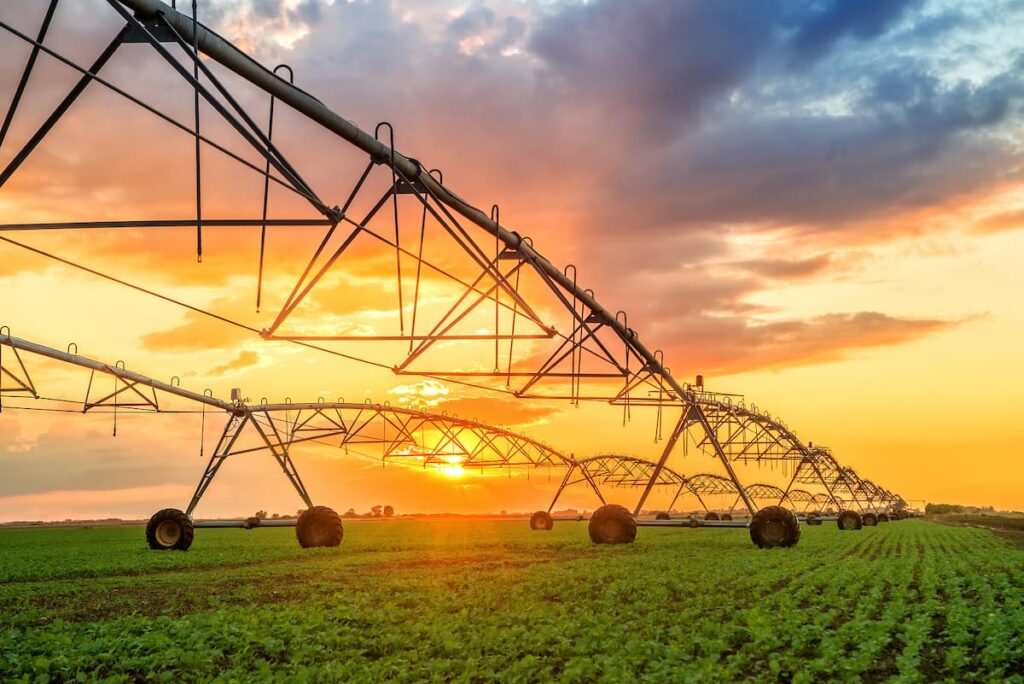8 Water Technology Startups Helping Agriculture Grow Up
Table of contents
Table of contents

Some days it seems like the world is going to end in a sudden fireball. Other times we predict a slow, painful death. It’s little wonder we writers drink so heavily writing about all of this turmoil day after day. That’s why we like our jobs here at Nanalyze. It’s not that we think technology is going to save the world—and there are all sorts of risks and scams associated with emerging tech—but there are a lot of smart people coming up with very smart ways to solve problems and make a little (or a lot of) scratch for themselves and their investors. Water technology startups certainly fall into that category.
We recently wrote about seven water technology startups that are inventing all sorts of ways to save on precious H20, from re-imagining desalination technology to using satellites for detecting underground leaks. Now we want to talk about water technology startups tackling the biggest water consumer of all—agriculture. Roughly 70 percent of the world’s freshwater supply goes toward irrigating crops. In the United States, agriculture slurps up as much as 80 percent of surface and groundwater, while some western states use as much as 90 percent (we’re looking at you, California). In addition, by some estimates, only half of the water used in agriculture returns to the environment in some form or fashion, compared to up to 90 percent for residential and commercial users.
Here are eight water technology startups helping siphon less water to the farm while keeping yields at their maximum.
Planting Sensors

Arable’s solar-powered sensors (below) use about 40 data streams to help farmers make decisions about irrigation and other processes.
Input includes information about air pressure, humidity and even canopy biomass (how much green is out there). It’s reportedly so easy to use and install that even city folk like us could (probably) make this water technology work.
Based in Adelaide, South Australia, AquaSpy builds sensors that get to the root of irrigation problems. The water technology startup has raised nearly $11 million, split between equity funding and debt financing in recent years. AquaSpy offers a fully automated soil-monitoring system that measures not only moisture but temperature and electrical conductivity. The last measurement provides information about the salinity—how salty—the soil is up to four feet in depth. By monitoring changes in electrical conductivity through depth, Farmer John gets better clues as to where to apply fertilizer and other chemicals. The company claims its data help improve yields by 10 to 40 percent.


Update 08/21/2019: CropX has raised $10 million in funding to boost its research and development efforts. This brings the company’s total funding to $22.9 million to date.
The WAN Farm


Judging by the illustration above, we’d say the platform would also be attractive to remote industries such as mining or survivalist camps in Montana.
Flying High


In one business case, Ceres Imaging says a grower spent $3,200 on 160 acres of water stress imagery. Changes in irrigation based on the imagery improved the yield on 40 acres by 25 percent—worth $120,000 net of capital expenses. In addition to water monitoring, the startup can also use the imagery to estimate chlorophyll and nitrogen levels, which can help ensure plants are getting all of their needed vitamins and minerals.

In particular, the thermal map can identify areas where water levels may be too high or too low, giving Farmer John the intelligence he needs to change his irrigation practices. TerrAvion can also provide intel on things like overall plant health by detecting chlorophyll levels. All of that information can be accessed by computer or even a mobile app through a smartphone.
Pump Power
Another California startup, PowWow Energy is a water technology startup that offers software as a service (SaaS) to help conserve H20 on the farm. Its Pump Monitor software turns existing smart energy meters into smart water meters. The company says it is able to monitor water pumps to detect anomalies in the pump system. For example, it says it can identify a falling water table before it affects yield and irrigation efficiency.

All of that happens behind the scenes. Farmer John gets text messages like the ones above alerting him to any problems in the system. No hardware required. The platform also pulls in data from existing sensors such as those for soil moisture as well as weather stations for its analytics.
Conclusion
In our previous story on water technology startups, we noted how little funding seemed available. While none of the companies here can match VC dollars for something as important as bike sharing, there seems to be an uptick in interest in water technology when you throw agriculture into the mix. If and when the isht hits the fan, water may one day prove to be more valuable than gold or oil—and these water technology companies may reap the benefits.
Sign up to our newsletter to get more of our great research delivered straight to your inbox!
Nanalyze Weekly includes useful insights written by our team of underpaid MBAs, research on new disruptive technology stocks flying under the radar, and summaries of our recent research. Always 100% free.















